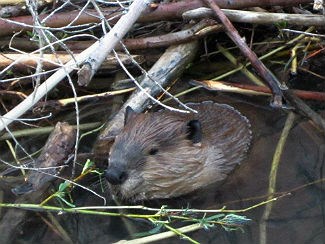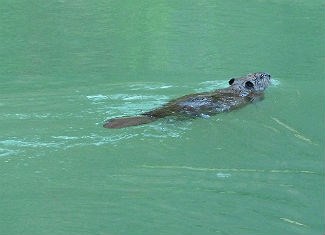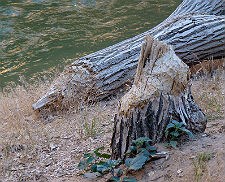
NPS photo (Castor canadensis)
Did you know that Zion National Park is home to the American beaver? You may not immediately think of these aquatic mammals when in the Southwest, but the Virgin River provides a welcome habitat for this river specialist. Sightings are rare, but evidence of the beaver's activity can be seen on many of the park's Fremont cottonwood trees (Populus fremontii). They do most of their tree-chewing during the night when the cover of darkness helps them to avoid predators.
What may surprise you is what you will not see –beaver dams or lodges. Because the Virgin River experiences frequent flooding (10-15 times a year), the beaver has learned better than to try and alter the river's natural course. Zion's beavers instead burrow into the banks of the river to create a lodge that won't be washed away in a destructive flood. These lodges function in the same way as a traditional beaver lodge with a large, dry living area and a submerged entrance to protect the family from unwanted intruders.
Beavers have a very strong social structure and raise their families inside of these bank lodges. A beaver pair can produce two to three young (called "kits") who reach maturity in about two years. Year-old kits will help to care for their younger siblings while their parents are away but will usually move out of the lodge when they reach maturity.

NPS photo 
NPS photo / Marc Neidig |
Last updated: October 5, 2015
